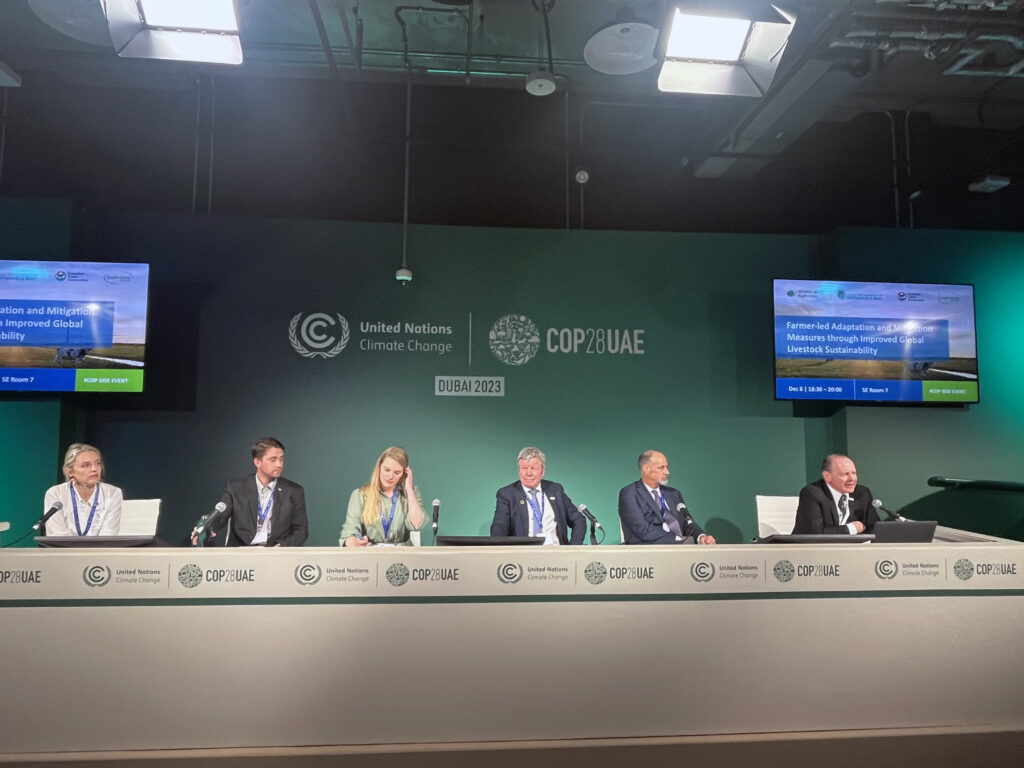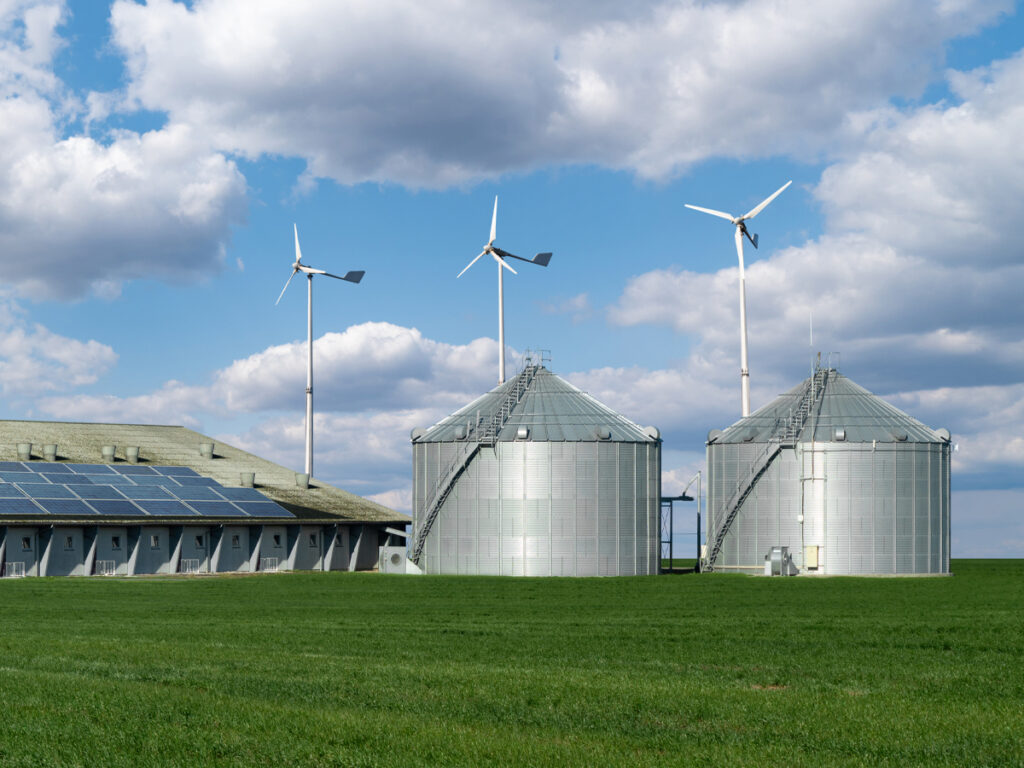COP28 involved the dairy sector in more side events than at any previous climate change conference. Of note, Global Dairy Platform (GDP) and the International Dairy Federation each hosted an official COP28 side event, with many of their delegates participating in speaking engagements throughout the conference.
GDP’s side event in partnership with the beef industry — Farmer-led Adaptation and Mitigation Measures Through Improved Global Livestock Sustainability — featured panelists from the dairy and livestock sectors.

GDP’s executive director, Donald Moore, facilitated one panel that included Jay Waldvogel, senior vice president strategy and international development of Dairy Farmers of America (United States), and Andy Macfarlane, elected director of Fonterra (New Zealand).
Macfarlane talked about whether farmers are leading the way in terms of adaptation and mitigation measures. Farmers are making progress, he said, but not fast enough.
For farmers to lead change:
- The economic signals have to be clear and simple.
- Solutions have to save labor, because time is a premium.
- The improvements need to be visualized, which is difficult with greenhouse gas mitigation.
- It shouldn’t require a lot of capital where banks and financiers are involved.
- Solutions must be simple to adopt and easy to rationalize.
- It needs to be a collective effort, with shared risks.

Waldvogel made the point that farmers must be at the table for conversations about climate action, and it should represent all different farming systems, whether they have 20 or 20,000 cows.
“If you look at the history of the world,” he said, “I would challenge anybody to find a sector, to find a group of people that has been more innovative, more willing to accept technology and change than farmers. If you want to go fast, put the right incentive in front of a farmer and you’ll go.”
In the second panel, Hanne Søndergaard, executive vice president and chief agriculture and sustainability officer of Arla Foods (Denmark), explained her involvement in P2DNZ and what her cooperative is doing to accelerate climate action.
- Find a way to measure emissions on the farm level.
- Set targets and create a road map for achieving them.
- Create an incentive for farmers to move.
- Establish commercialization to fund further action.